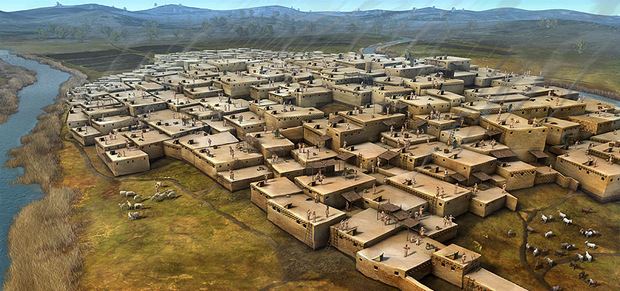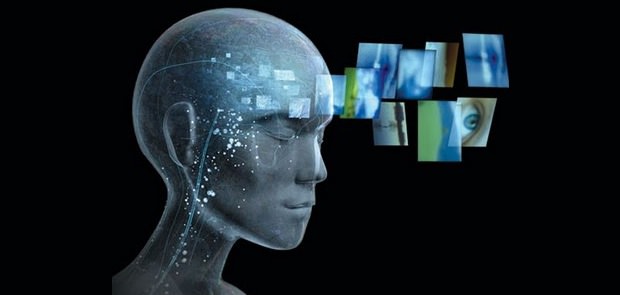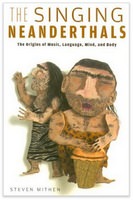7 Mental Traits Every Human Needs to Have Imagination
Humans are unique in our ability for imagination. But how did we evolve this free-thinking ability over all other apes?
Humans are unique in our endless capacity for imagination.
According to Steven Mithen, an anthropologist at the University of Reading in the UK, we needed to evolve seven critical mental skills before we could have imagination as we know it.
Each of these abilities serve a distinct purpose in their own right, while imagination is the culmination of them all. Here they are, as they evolved in chronological order:
1. Theory of Mind

This is the knowledge that other people have thoughts and beliefs which are different to our own. Our ancestors have understood this for about 3.5 millions years now.
A crude version of this ability has been detected in infants as young as seven months. But it's not until we reach four years that we have a sophisticated understanding of other people's perspectives.
We continue to develop our theory of mind until age 20, after which it plateaus. This explains why teenagers can seem self-centered. They have an under-developed sense of empathy.
How it supports imagination: Theory of mind allows us to perform thought experiments about other people's behaviors. It's also the basis of every character arc in every story ever told.
2. Human Life History

Just over 2 million years ago, our distant ancestors evolved the ability to walk upright on two feet. Besides freeing up our hands to use tools, this had a major knock-on effect on our infant development.
Standing upright narrowed the pelvis, which meant we had to birth our young with smaller heads. Ever seen a two-day-old goat kid walking about like he owns the place? By comparison, our babies are helpless for a really long time.
In terms of brain development it's like we're born prematurely. We're then totally dependent on our parents while we finish growing our full size brains. This also led to our extended childhood and adolescence.
How it supports imagination: All that time with no adult responsibilities gives us extended opportunity for imaginative play. We spend decades thinking in fanciful and truly creative ways before adulthood trains us to be more analytical and responsible.
3. Specialized Intelligence

One million years ago: Homo erectus evolves dedicated mental modules to deal with specific types of thought or behavior.
For example, it's widely believed that there is a specialist module for learning language.
Rather than overhearing a new language and then using general intelligence to figure out the rules, Noam Chomsky said that there is a distinct neuronal circuit in every human brain whose sole function is language acquisition.
How it supports imagination: Modular intelligence allows us to combine different types of knowledge, from different areas of experience, to create novel ideas.
4. Language

Now let's look at much more recent developments in our brain's evolution.
With Homo sapiens came the evolution of true language. It's hard for us to say when though.
Some scientists reckon it was a catalyst for the migration of our African ancestors to Asia and Europe around 60,000 years ago.
Over the millennia we've developed complex language systems comprising many words and grammatical rules. No other species does anything like this.
How it supports imagination: Language enables us to create, share and elaborate on ideas collectively. There is good evidence that groups are more creative - and even intelligent - than smart lone thinkers.
5. Cognitive Fluidity

With language comes cognitive fluidity - the idea that attentive consciousness allows us to study specialist knowledge and apply the lessons across many domains.
According to Mithen, archaic humans, like Neanderthals and Homo erectus had "Swiss penknife minds" - meaning their intelligence was modular in dealing with the social, material and natural worlds.
In modern humans, these cognitive barriers are removed, enabling more fluidity of thought.
How it supports imagination: This whole-brain thinking enables us to leapfrog to novel thoughts and ideas, as well as dream up metaphors and analogies.
6. Sedentary Lifestyle

The Neolithic revolution began at the end of the Ice Age, around 10,000 years ago.
Humans shifted from a nomadic hunter-gatherer lifestyle and began farming food.
By planting grains, vegetables and domesticating animals, early humans gained a reliable food supply. This enabled them to give up the nomadic way of life and settle into communities.
How it supports imagination: With the critical pursuit of food and shelter taking up less time, humans could spend more of their days on imaginative and creative pursuits.
7. The Extended Mind

Where does the mind stop and the rest of the world begin?
The extended mind theory by Clark and Chalmers says that objects in our environment (like books and computers) function as an extension of our own mind.
They suggest there's no need to separate mind, body and environment when it comes to intangible cognitive processes.
How it supports imagination: Recording our ideas, along with extra computing power and creative tools to develop them, allows us to boost our imagination like never before...
 Further Reading
Further Reading
Steven Mithen is a Professor of Archaeology at the University of Reading, UK.
His books include The Singing Neanderthals and The Prehistory of the Mind: The Cognitive Origins of Art, Religion and Science.
















